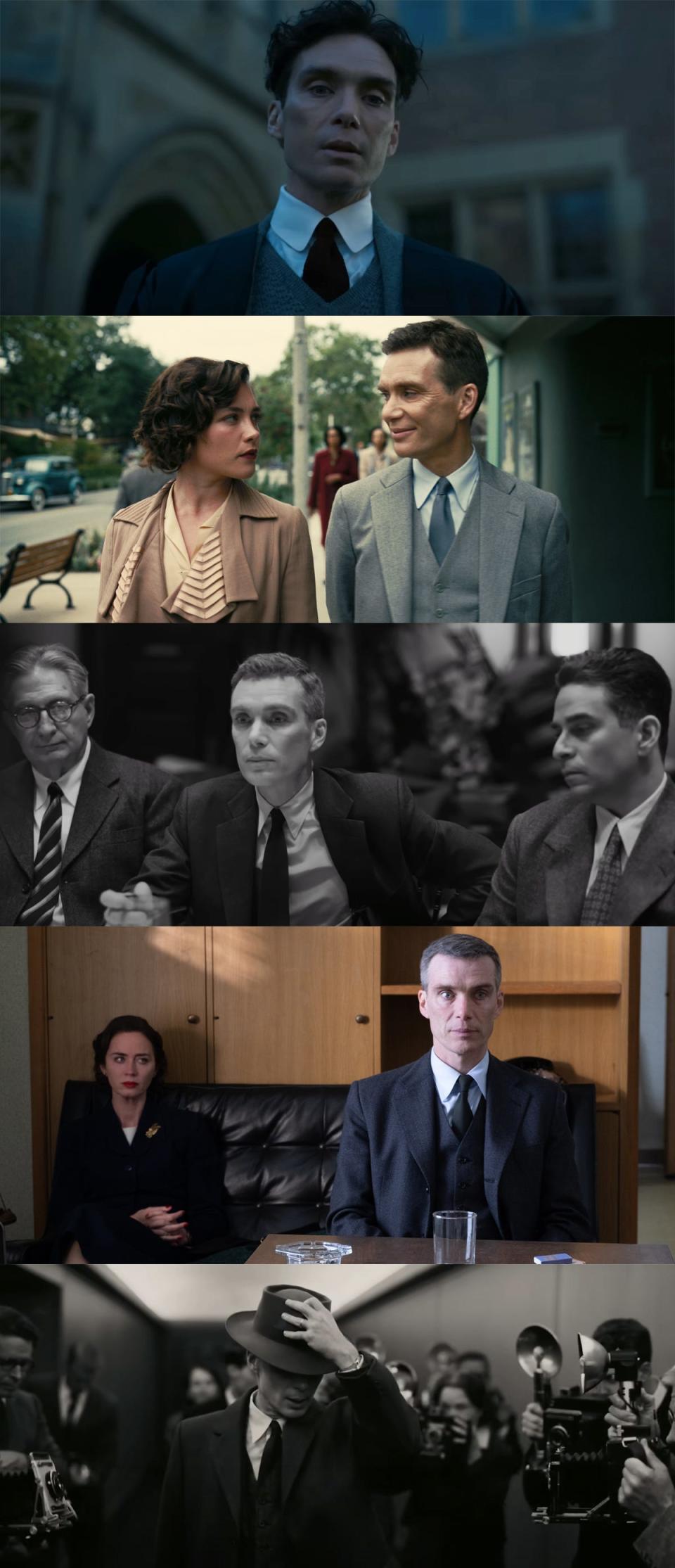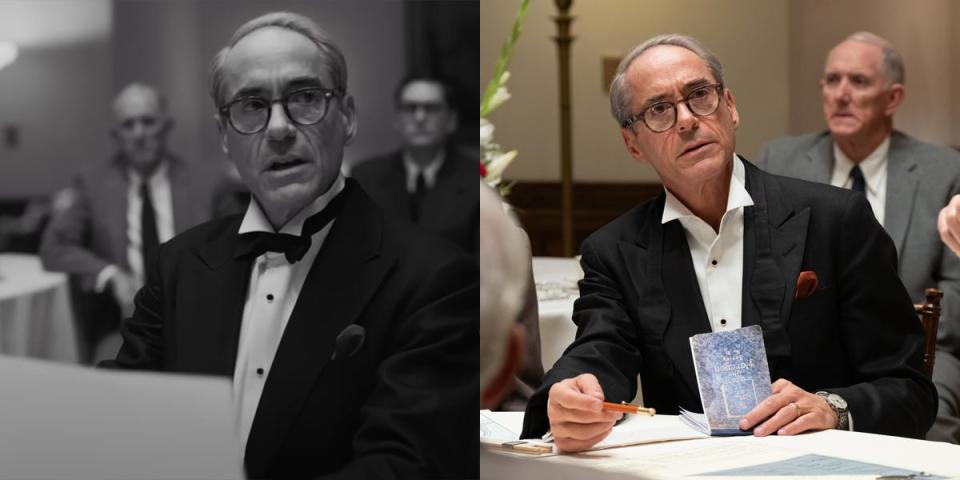You're probably watching 'Oppenheimer' wrong. Here's why some of the movie is in black-and-white and other scenes are in color.

"Oppenheimer" contains scenes in both color and black-and-white.
It's not to denote past versus present.
Color scenes are supposed to be from Oppenheimer's perspective. The black-and-white ones are from Lewis Strauss.
Director Christopher Nolan's three-hour bio-thriller "Oppenheimer" opens with a flurry of scenes bouncing back and forth between black-and-white and color.
Upon first watch, it may be a bit confusing to viewers.
The usual assumption is that scenes in color showcase a current timeline while black-and-white scenes signify flashbacks into the past, but that's not what's going on in "Oppenheimer."
Nolan's uses of black-and-white and color are not to denote past versus present.

J. Robert Oppenheimer (Cillian Murphy) is seen in color whether he's college age or in the latter half of his life. Sometimes, he also appears in black-and-white sequences.
Robert Downey Jr.'s character, former Atomic Energy Commission chairman Lewis Strauss, is also seen in both color and black-and-white scenes, sometimes in both the future and the past.
The artistic styling is used to highlight the juxtaposition between the film's protagonist, Oppenheimer, and his eventual nemesis, Strauss.
Scenes in color are supposed to be viewed from Oppenheimer's point of view. Those in black-and-white are supposed to be from Strauss' account.
But it's a little deeper than that.
Production notes provided to Insider explain that "Nolan decided that the scenes told through Oppenheimer's perspective would be in color (he also wrote them in the first person, an unconventional choice for a screenplay), with occasional cutaways to evocative, surreal imagery that symbolically expressed his interior world. The scenes that center on Strauss would be in black and white."

"At various points, we try to burrow into Oppenheimer's psyche and take the audience on his emotional journey," Nolan adds in the production notes. "That was the challenge of the film: To tell the story of a person who was involved in what was ultimately an extraordinary destructive sequence of events, but done for the right reasons, and tell it from his point of view."
Of writing in the first person, Nolan added: "It's a strange thing to do... But it made it clear to anyone who read the script that we, the audience, are on this ride with Oppenheimer. We're looking over his shoulder, we're in his head, we're going everywhere with him."
Read the original article on Insider


